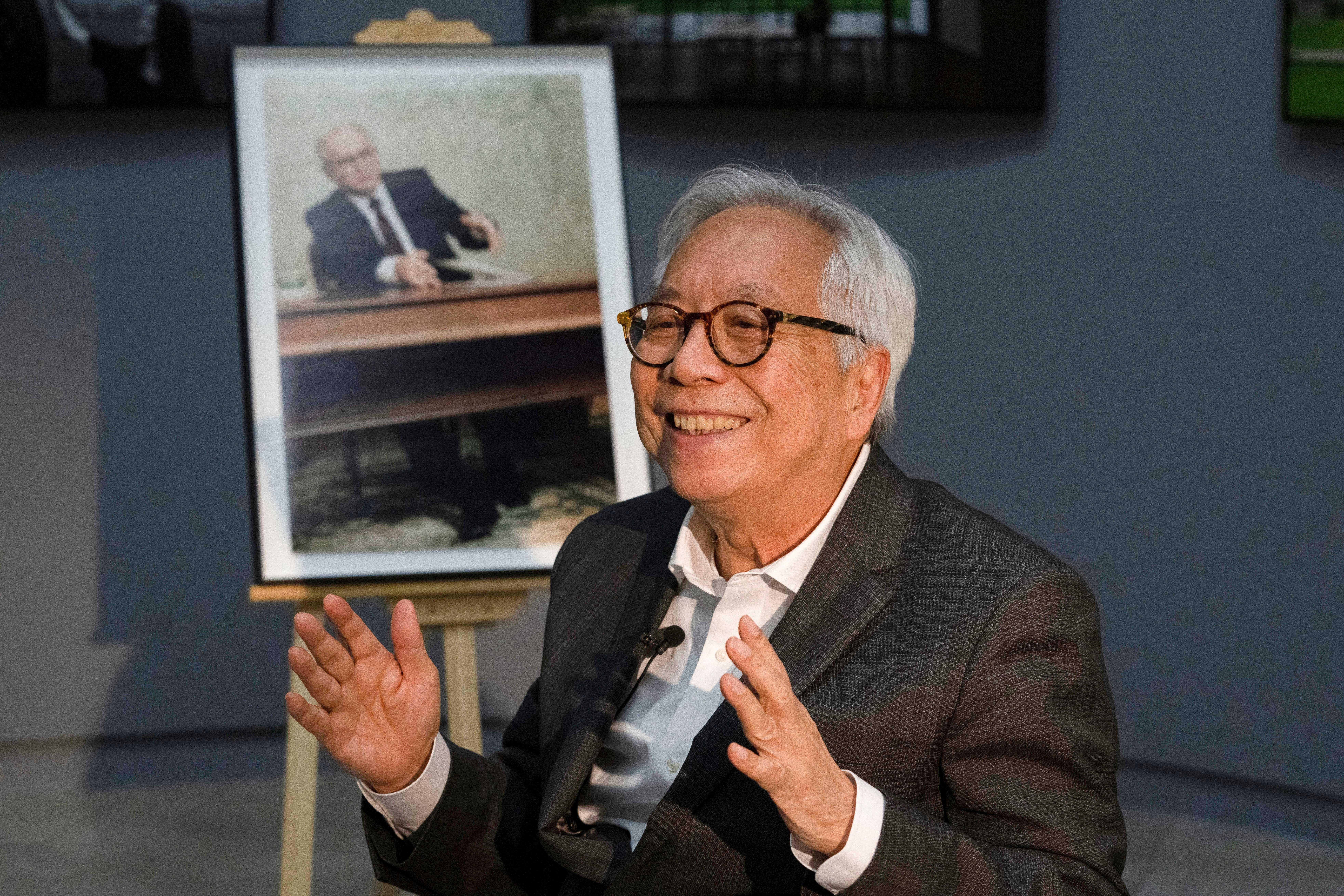As Gorbachev resigned, AP photographer snapped historic shot
Soviet President Mikhail Gorbachev’s resignation 30 years ago was a momentous event that ended an era by drawing a line under the USSR’s existence

Your support helps us to tell the story
From reproductive rights to climate change to Big Tech, The Independent is on the ground when the story is developing. Whether it's investigating the financials of Elon Musk's pro-Trump PAC or producing our latest documentary, 'The A Word', which shines a light on the American women fighting for reproductive rights, we know how important it is to parse out the facts from the messaging.
At such a critical moment in US history, we need reporters on the ground. Your donation allows us to keep sending journalists to speak to both sides of the story.
The Independent is trusted by Americans across the entire political spectrum. And unlike many other quality news outlets, we choose not to lock Americans out of our reporting and analysis with paywalls. We believe quality journalism should be available to everyone, paid for by those who can afford it.
Your support makes all the difference.It was a landmark event that ended an era: Soviet President Mikhail Gorbachev s resignation 30 years ago finalized the USSR’s demise. The AP's Moscow photo chief at the time, Liu Heung Shing, was the only foreign photographer who captured the pivotal moment on Dec. 25, 1991.
In the fall of 1991, the Soviet Union was speeding up quickly to its dissolution. On Dec. 8, 1991, the leaders of the three Slavic Soviet republics met to declare that the Soviet Union was no more, and to create the new Commonwealth of Independent States, which was joined by eight other republics two weeks later.
___
EDITOR’S NOTE: Liu Heung Shing worked as The Associated Press Moscow photo chief in 1990-1993. Liu and his AP colleagues won the 1992 Pulitzer Prize for Spot News Photography for documenting the Soviet collapse.
___
It was clear at that point that Gorbachev was unable to reverse the country’s de-facto breakup, and when Liu got a call on Dec. 24 inviting him to the Kremlin he realized that the terminal moment had come.
Next evening, Liu entered the Kremlin with a crew led by CNN President Tom Johnson to attend Gorbachev's live televised address to the nation.
“I had covered China earlier in post-Mao times, and I know how much China was influenced by the Russian revolution of 1917 and how after World War II the whole of Europe and America soon fell into the Cold War,” said Liu, who left the AP in 1995 and became the founder and director of the Shanghai Center of Photography. “So I said to myself: ‘You know, this is a big deal in terms of history.’”
When he took his position under a TV camera tripod, a KGB guard sternly warned him not to take any pictures during Gorbachev’s speech so that the click of his camera’s shutter wouldn’t ruin the live broadcast.
Liu pondered how to best capture the watershed moment and quickly decided that an image of Gorbachev putting down his speech in the end would best convey the mood. He decided not to use flash that would make the picture look like a routine press conference-style shot, and opted for a slow shutter speed to capture sheets of paper moving and reflect the fleeting moment.
“The most important consideration was I want to make sure that you still see the paper moving,” Liu said, adding that he thought it would best reflect “the passing of the moment of history.”
Once Gorbachev ended his speech and closed the folder containing it, Liu pressed the button and “as soon as I took that one picture the KGB guard standing on my left behind the camera ... punched me through the tripod,” Liu recalled. “But it didn’t hurt really bad.”
Eager to quickly process the film and send the picture to AP clients, he sprinted down a giant red-carpeted Kremlin staircase.
“I was running like mad, I was running like I was running in two hundred meters in the Olympics,” he recalled. Down the stairs he saw hundreds of journalists waiting to get in, who immediately realized that they had missed the moment.
“I heard them all screaming four-letter words to me and sticking middle fingers up in the air, but I just kept running,” he said. “I went straight to my car and I saw the Soviet Union’s flag coming down and the Russian flag, the Russian Federation flag, went up and I was driving madly to go back to the bureau.”
In that pre-digital age Liu would only know whether his image was sharp after processing the film, and he feared that the slow shutter speed might have left Gorbachev blurred: “It would have been my lifetime failure.”
“So I went back and processed the film,” he recalled. “What a sigh of relief, you know. Mr. Gorbachev was sharp, the paper was moving, and that’s the picture.”
And then, Liu said, it made the “front page of practically all papers next day around the world — end of the Soviet Union."